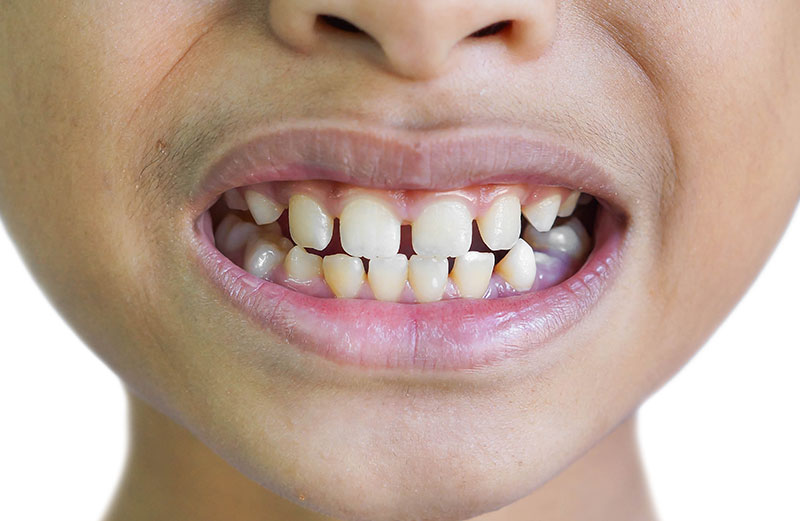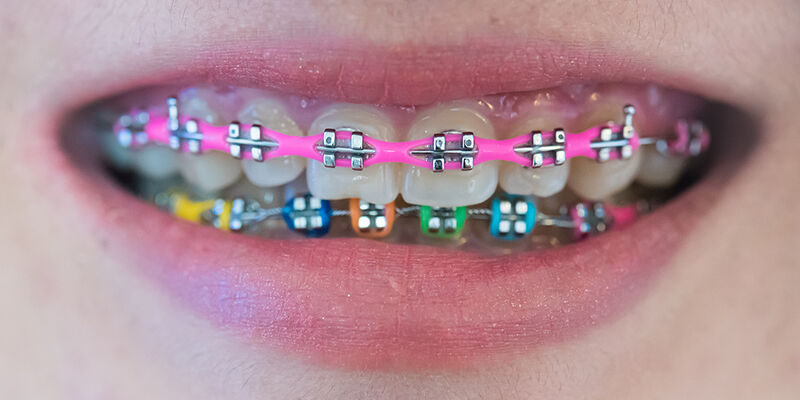Mild open bite

A mild open bite is a dental condition where there is a slight gap between the upper and lower teeth when the mouth is closed. Unlike severe open bites, which can cause significant functional and aesthetic issues, a mild open bite may not always be immediately noticeable but can still impact oral health and function. This article explores the causes, symptoms, diagnosis, and treatment options for a mild open bite.
What is a Mild Open Bite?
A mild open bite refers to a small gap between the upper and lower teeth that does not fully close when the jaws are brought together. This gap can be present in the front (anterior open bite) or the back (posterior open bite) of the mouth. Even though the gap is minor, it can still affect the alignment and function of the teeth and jaw.
Causes of Mild Open Bite
Several factors can contribute to the development of a mild open bite, including:
1. Genetic Factors
Genetic predisposition can play a significant role in the development of an open bite. If there is a family history of dental malocclusions, there is a higher likelihood of developing a mild open bite.
2. Behavioral Habits
Certain childhood habits can lead to a mild open bite. These include:
- Thumb Sucking: Prolonged thumb sucking can push the front teeth forward, creating a gap.
- Pacifier Use: Extended use of a pacifier can similarly affect the alignment of the teeth.
- Tongue Thrusting: Pushing the tongue against the teeth while swallowing or speaking can cause the teeth to move forward.
3. Skeletal Discrepancies
Minor discrepancies in the growth and alignment of the jawbones can lead to a mild open bite. These discrepancies are often present from birth and may become more noticeable over time.
4. Temporomandibular Joint Disorders (TMD)
Issues with the temporomandibular joint (TMJ), which connects the lower jaw to the skull, can result in misalignment of the jaw and teeth, contributing to a mild open bite.
5. Mouth Breathing
Chronic mouth breathing due to nasal obstructions, allergies, or other respiratory issues can affect the alignment of the teeth and jaw, leading to an open bite.
Symptoms of Mild Open Bite
While a mild open bite may not be as immediately noticeable as a severe one, it can still cause a range of symptoms, including:
- Gap Between Teeth: A visible gap between the upper and lower teeth when the mouth is closed.
- Difficulty Biting: Problems with biting into foods, especially those that require a strong front bite, like apples or sandwiches.
- Speech Issues: Difficulty pronouncing certain sounds or words due to improper alignment of the teeth.
- Chewing Problems: Inefficient chewing due to the gap between the teeth.
- Aesthetic Concerns: Self-consciousness or dissatisfaction with the appearance of the teeth.
Diagnosing Mild Open Bite
Accurate diagnosis is essential for determining the appropriate treatment for a mild open bite. The diagnostic process typically involves:
1. Clinical Examination
A dentist or orthodontist will conduct a thorough examination of the teeth, jaws, and facial structure to assess the alignment and identify any gaps between the teeth.
2. Dental Impressions
Taking impressions of the teeth to create models can help in evaluating the extent of the open bite and planning treatment.
3. Radiographic Imaging
X-rays, CT scans, or 3D imaging may be used to get a detailed view of the teeth and jawbones, helping to identify any underlying skeletal issues.
Treatment Options for Mild Open Bite
Treatment for a mild open bite varies depending on the underlying cause and the patient’s age and overall dental health. Common treatment options include:
1. Orthodontic Treatment
Orthodontic treatments are often effective in correcting a mild open bite. These include:
- Braces: Traditional metal braces or clear ceramic braces can gradually move the teeth into proper alignment, closing the gap.
- Invisalign: Clear aligners like Invisalign are a popular choice for adults and teens. They are nearly invisible and can be removed for eating and cleaning.
- Retainers: After orthodontic treatment, retainers help maintain the new alignment of the teeth.
2. Behavioral Modification
Addressing habits that contribute to the open bite is crucial, especially in children. This can involve:
- Thumb Sucking Prevention: Techniques to discourage thumb sucking, such as using positive reinforcement or thumb guards.
- Tongue Thrust Therapy: Myofunctional therapy to retrain the tongue and correct swallowing patterns.
3. Dental Appliances
Special dental appliances can be used to correct a mild open bite, particularly in children. These appliances help guide the growth of the jaw and teeth into proper alignment.
4. Myofunctional Therapy
Exercises designed to improve tongue posture and swallowing patterns can be beneficial, particularly for those with tongue thrusting habits.
5. Minor Dental Procedures
In some cases, minor dental procedures such as bonding or reshaping the teeth may be necessary to achieve proper alignment.
Preventing Mild Open Bite
Preventing a mild open bite involves addressing risk factors and promoting good oral habits. Some preventive measures include:
- Encouraging Proper Oral Habits: Discourage prolonged thumb sucking, pacifier use, and other habits that can affect dental alignment.
- Promoting Nasal Breathing: Addressing nasal obstructions or allergies to encourage breathing through the nose rather than the mouth.
- Regular Dental Check-Ups: Routine dental visits for early detection and intervention of alignment issues.
- Orthodontic Evaluations: Early orthodontic evaluations, usually by age 7, to identify and address potential issues before they become severe.
Conclusion
A mild open bite, while less severe than other forms of malocclusion, can still impact dental function and aesthetics. Understanding the causes, recognizing the symptoms, and seeking appropriate treatment are essential steps in managing this condition. Orthodontic treatments, behavioral modifications, and preventive measures can effectively address a mild open bite, leading to improved oral health and a more confident smile. If you suspect you or your child has a mild open bite, consult with a qualified orthodontist or dental specialist to explore the best treatment options.
Related to read:
Best Oral Hygiene Practices For Optimum Oral Health.
How to Whiten Teeth Naturally?
How to keep your gums healthy and disease-free?
References
To ensure the information provided is accurate and up-to-date, the following sources were referenced:
- American Dental Association. (n.d.). Plaque and Tartar. Retrieved from ADA website
- Mayo Clinic. (n.d.). Dental Plaque. Retrieved from Mayo Clinic website
- National Institute of Dental and Craniofacial Research. (n.d.). Periodontal (Gum) Disease. Retrieved from NIDCR website








